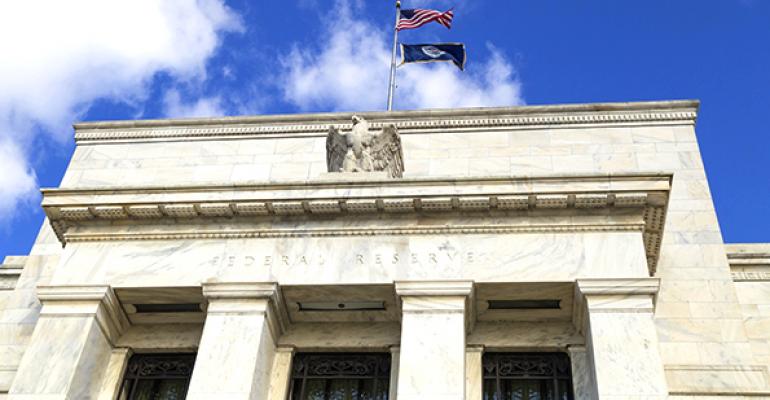(Bloomberg)—The U.S. Treasury has been planning for years how to deal with the funding gap set to open up when the Federal Reserve begins unwinding its $2.5 trillion hoard of the government’s debt.
Now there’s a new wrinkle to prepare for, as the latest deal to extend the nation’s debt limit complicates matters for Treasury Secretary Steven Mnuchin just as the Fed is expected to unveil the start of its balance-sheet reduction.
With the debt-cap suspension expiring Dec. 8, there’s a growing sense among investors and analysts that Treasury will have to slow or hold off on the inevitable -- increasing note and bond sales to deal with the shift in Fed policy and rising federal deficits. Most strategists had predicted that long-term tilt toward more coupon issuance would start in November, so a delay may provide a boost for bond bulls betting yields can stay near historic lows.
“The debt-limit issue will in the near-term affect what Treasury does with coupon issuance,” said Gene Tannuzzo, a money manager at Columbia Threadneedle, which oversees $473 billion. “At the end of the day, Treasury will have to do a lot more coupon sales. On the margin, for now, if there is less coupon issuance it is a modestly positive technical” for Treasuries.
Just how exactly Treasury will respond to the Fed’s tapering is one of the great unknowns facing investors. The mix of maturities it decides on has far-reaching implications for the world’s biggest bond market, with the potential to alter the shape of the yield curve for years to come.
A Treasury spokeswomen, Marisol Garibay, declined to comment.
At its August debt refunding, Treasury said it would likely boost bills and nominal coupon sizes, though it didn’t give specifics. The department and its borrowing advisory committee agreed on possibly deciding on the mix as early as November and saw a broad need to increase issuance given the prospect of worsening budget deficits.
The public debt, now about $14 trillion, is set to swell by around $10 trillion in the next decade amid rising costs for programs like Medicare and Social Security and growing interest expenses, the Congressional Budget Office predicts. That doesn’t take into account any of the tax cuts or fiscal stimulus that the Trump administration has proposed.
“The Treasury may want to use just more bill sales for now as it will provide them with more flexibility given this uncertainty related to the debt ceiling,” said Margaret Kerins, head of fixed-income strategy at BMO Capital Markets Corp. “I wouldn’t be surprised if they punted on coupon increases in November, or maybe decided to lift them up just slowly.”
With the latest deal only suspending the debt ceiling until December, Lou Crandall, chief economist at Wrightson ICAP, cut his prediction for increased coupon auction sizes starting in November, to $1 billion per maturity from a prior forecast of $2 billion.
For him, the key to the calculation is that the looming debt-cap suspension leaves Treasury limited room to boost bill supply, because the approaching expiration will constrain how much cash it can have. Since increasing bills remains a focus for the nation’s debt managers, that means they’ll probably choose to lift coupon auctions less this time around to avoid squeezing the supply of bills.
In June, the Fed outlined the mechanics of how it will shrink the balance sheet, through gradually raising runoff caps for maturing Treasuries and mortgage-related securities. The plan is to start with monthly reductions of $6 billion for Treasuries and $4 billion for mortgage securities, gradually increasing the amounts to as much as $30 billion and $20 billion, respectively. Including mortgage debt, the Fed’s portfolio is about $4.5 trillion, amassed in a bid to support the economy after the financial crisis.
While investors are entering uncharted territory as the Fed rolls back its crisis-era policies, the longer-term outlook for borrowing is clear, said Alex Li, head of rates strategy at Credit Agricole.
“Issuance overall though should be rising in coming years,” he said. “Treasury will have more borrowing requirements as the Fed begins its portfolio taper. And everything is also pointing to higher budget deficits, not lower, which will lead to more Treasury marketable borrowing down the road.”
To contact the reporter on this story: Liz Capo McCormick in New York at [email protected]. To contact the editors responsible for this story: Boris Korby at [email protected] Mark Tannenbaum, Dave Liedtka
COPYRIGHT
© 2017 Bloomberg L.P

